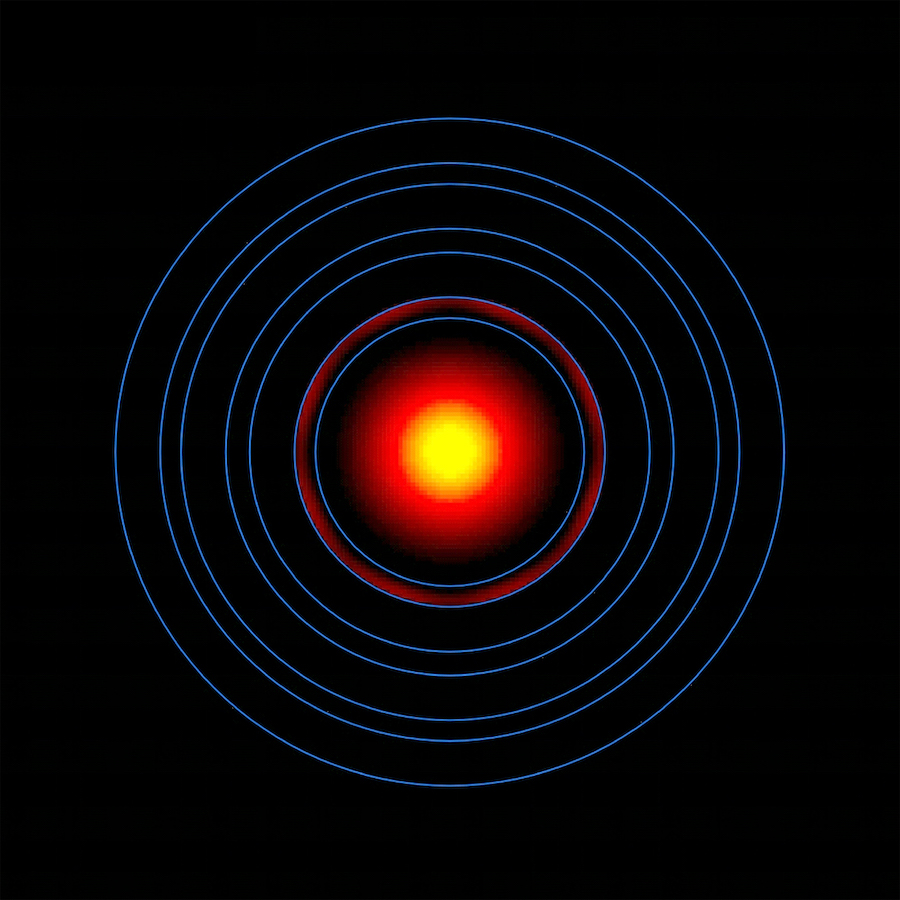Hollow Photonic Crystal Fibers As Laser Waveguides

A modeled photonic crystal fiber shows the concentration of light channeled down its hollow core.
The BeamPath endoscopic scalpel and FlexGuide robotic instrumentation suite from MIT spinout company OmniGuide are enabled by unique photonic bandgap fibers — developed by MIT professors John Joannopoulos and Edwin Thomas, now at Texas A&M, with graduate student Yoel Fink, now himself a full professor at MIT — constructed on the nanoscale to act like perfect cylindrical mirrors for selected wavelengths of light, thus acting as a new mechanism for controlling light and enabling optical light to be guided through air with low losses.
The flexible fibers allow, for the first time, the guiding of high power CO2 laser light down the core of a hollow fiber, enabling these highly maneuverable and incredibly precise surgical tools.
It is estimated that these photonic crystal laser scalpels have been used in more than 500,000 procedures at more than 1000 VA and civilian hospitals across the US.
One such case was featured on an episode of the CNN series Vital Signs with Dr. Sanjay Gupta in which a neurosurgeon from the Wake Forest University School of Medicine attempted to remove a large tumor from the brain of a teenage patient.
After a frustrating six hour-long surgery using conventional technologies resulted in a tumor that was only ~20% reduced, the physician learned of the OmniGuide laser scalpel.
Within 72 hours, he had investigated and acquired the new instrument. He was quickly trained in its use and within days, with expert assistance from a specialist provided by OmniGuide, the patient was back in the operating room.
In just four hours using the OmniGuide tool, the surgery team was able to remove the remaining ~80% of the tumor.
By that evening, the patient was breathing and eating normally, and subsequently his other basic functions and normal behavior have returned.

